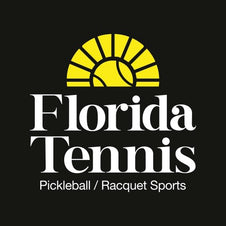Tennis Specific Strength and Conditioning
Apr 29, 2024
Strength and conditioning programs are crucial to the success of any athlete and tennis players are no exception. Studies show that a periodized, multi-set program for resistance training far exceeds the single set to failure approach for strength. We also know, through sports science, that a sprinter can improve his/her aerobic capacity by training distance but a distance runner cannot significantly improve his/her sprint times by training fast. Enter the concept of “Training Specificity”.
Training Specificity simply describes a training program that uses exercises, energy systems and rest periods that mimic those used in the sport. For instance, when designing a resistance-training program for tennis, one would consider using a program focused on power endurance. Being able to reproduce powerful shots, repetitively, requires high muscular power, with minimal rest.

Above: Maria Sakkari at the Miami Open. Photo: Miami Open / Hard Rock Stadium.
Here are some key aspects to consider when designing a strength and conditioning program for tennis players.
Bioenergetics
Although tennis may contain long matches, which require endurance, studies have shown that the main energy source is the Phosphagen System (short bursts of high intensity). Understanding this, emphasis should be placed more on anaerobic bouts of conditioning, with less emphasis on long, slow aerobic training. Keep in mind that the aerobic contribution is necessary for recovery between the high intensity bouts. Over-emphasizing aerobics can come at the cost of diminishing Fast Twitch Type II muscle fibers, which are responsible for the strength and power production.
Strength Training
Focus on full-body strength to improve power and stability. Include compound exercises like squats, Olympic lifting movements (snatch pulls/clean pulls), lunges, as well as upper body lifts such as varied dumbbell presses and specific shoulder strengthening exercises. Emphasis should be placed of full range and biomechanically sound technique.
Core strength plays a vital role in rotational movements and stability during ground strokes and perhaps more importantly, serves. Various versions of the plank are most beneficial here but adding ballistic work with medicine balls can be the real “power” generator.
Plyometrics
Muscle spindles are located in the belly of every skeletal muscle in the human body. These are protective mechanisms in the muscle, which protect it from damage upon rapid stretch. The simplest example of this mechanism is the knee-jerk test we all receive during our annual physicals. This reflex is also called the “myotatic stretch reflex” (fastest reflex in the human body).
Plyometric exercises are a series of jumping, hopping and bounding exercises, which maximize this myotatic stretch reflex, producing quicker, more powerful movements. The upper body can also benefit from this type of training in the form of plyo-push ups and varied medicine ball tosses (specific to the motor patterns of tennis).
Speed and Agility
Tennis requires rapid changes in direction. Although on court practice does include these changes in position, implementing speed and agility drills such as ladder drills, cone drills, and shuttle runs, can only enhances on-court movement.
Periodization
To begin with the end in mind! Working toward a peak performance requires a plan. Once the big tournament date is selected, a plan working back in time is developed. Periodization is a planned programming, which constantly manipulates intensity and volume of training variables. In this way, the athlete can train for their goal, over a longer period without the risk of overtraining.
These phases should build on each other. For example, a four month cycle might consist of a conditioning block (4 weeks), followed by a strength block (4 weeks) followed by a power block (4 weeks) leading into the peaking block (4 weeks). This final stage is when the tennis player would be tapering dramatically from resistance/high intensity conditioning and focusing more on perfecting their game.
Olympic athletes in some countries plan four years in advance, due to the Olympic schedule. In sports, such as tennis, shorter plans are more advisable.
Remember that individualization is key, and a program should be tailored to the player's specific needs, fitness level, and any existing injuries. Consulting with a certified strength and conditioning coach or a sports physiotherapist can provide personalized guidance and ensure the program aligns with the player's goals and overall well-being.
===
Ian Pyka was a two-sport collegiate athlete and three-time All-American who made the Olympic team. Pyka went on to become the strength and conditioning coach at the Florida Panthers and New England Patriots. Pyka currently teaches at FAU's Exercise Science Department and owns Boca Cryo (located at 1200 Yamato Rd. in Boca Raton). Visit bocacryo.com to learn more. Top Photo: Miami Open / Hard Rock Stadium.

